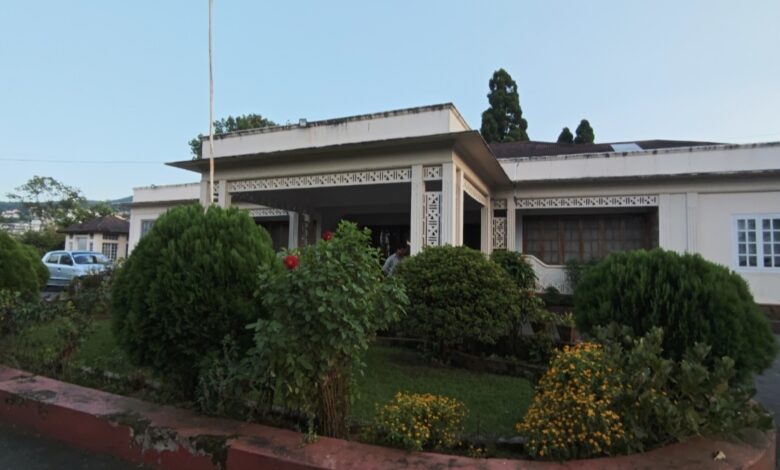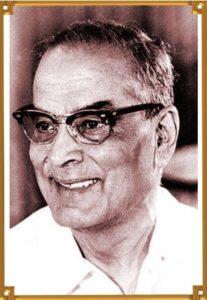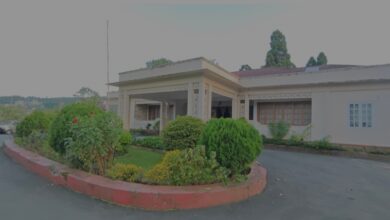Open letter to Centre for saving Bidhan Bhavan (Laban Circuit House)

Shillong, Nov 12: A letter addressed to union culture minister to save Laban Circuit House ( Bidhan Bhavan) is posted below.
Subject: Urgent Petition for the Preservation of the Historic “Bidhan Bhavan” (Circuit House) at
Kench’s Trace, Laban, Shillong, Meghalaya, as a National Heritage Site
To,
The Hon’ble Minister
Ministry of Culture
Government of India
Shastri Bhawan
New Delhi – 110001
Respected Sir/Madam,
The petitioner, concerned citizens and heritage enthusiasts of Shillong, Meghalaya, humbly submit this petition highlighting the critical and urgent need to preserve the historic building known as ‘Bidhan Bhavan’ or ‘Roy Villa’, currently functioning as the Circuit House at Kench’s Trace, Laban, Shillong. This structure, dating back to the early 1920s, stands as a testament to India’s rich cultural and historical legacy, yet it faces imminent threats from governmental actions that prioritize modernization over preservation.
The building was constructed by Dr. Bidhan Chandra Roy, a pioneering Indian physician who was among the first to hold both MBBS and MRCP/FRCS degrees. Dr. Roy, born on July 1, 1882, in Patna to Prakash Chandra Roy and Aghorkamini Devi, pursued his education at Presidency College, Calcutta, Patna College, Calcutta Medical College, and St. Bartholomew’s Hospital in London. He later served as the second Chief Minister of West Bengal and played a pivotal role in Shillong’s development during the British era, when the city was the capital of Assam Province and renowned as a sanatorium for health recovery.
Dr. Roy first visited Shillong in 1920 with his family and completed the construction of ‘Bidhan Bhavan’ before 1923. Situated on a hilltop amid pine forests, eucalyptus, cherry trees, and a vibrant garden, the house lacked modern amenities like electricity and motorable roads at the time, relying instead on gaslights and kerosene. Despite these challenges, Dr. Roy used the residence to treat patients, often providing free care to the needy, and to foster community ties. He was instrumental in introducing electricity to Shillong through the establishment of the Shillong Hydroelectric Company in 1921-22, which evolved into the Meghalaya Energy Corporation Limited (MeECL). The ‘Sonapani Hydel Project’ was inaugurated in 1923 by Maharani Sucharu Devi of Mayurbhanj, marking a significant milestone in the region’s infrastructure.
‘Bidhan Bhavan’ holds profound historical significance due to its associations with eminent personalities. In May 1923, Nobel Laureate Rabindranath Tagore visited the house during his stay in Shillong, where he attended a dinner party hosted by Dr. Roy. The event, possibly celebrating Tagore’s 62nd birthday, included notable figures such as Vice Chancellor Dr. Gyan Chakraborty of Lucknow University and Professor Prafulla Ghosh. Tagore, who drafted his play ‘Rakta Karabi’ (Red Oleanders) in Shillong, met Dr. Roy frequently at this location. Similarly, in June 1929, Netaji Subhash Chandra Bose stayed at ‘Bidhan Bhavan’ during his third visit to Shillong for rest and recuperation, from where he penned a letter to Basanti Devi, wife of Deshbandhu C.R. Das. The house also hosted other prominent visitors, including Swami Vivekananda (in broader Shillong context), Dr. C.V. Raman, and Queen Sucharu Devi, underscoring Shillong’s role as a hub for intellectual and cultural exchanges.
Regrettably, the Government of Meghalaya has demonstrated a pattern of neglecting heritage sites, as evidenced by the recent demolition of the historic Taraghar despite a court order mandating the preservation of its original form, to make way for a new state guest house. Now, ‘Bidhan Bhavan’ faces similar risks, with recent renovations altering its original character. While the exterior remains largely intact, internal sophistications and surrounding concrete constructions have eroded its greenery and historical ambiance. Materials once used by Dr. Roy and his family have not been properly preserved, leading to the gradual loss of its legacy. The building continues to host high officials and prominent personalities, with vehicles often lined up outside, but newer generations remain unaware of its profound importance. Without intervention, this site risks being overshadowed by urban development, much like the “hype of dry winter leaves” that obscures its untold stories.
The petitioners urge the Ministry of Culture to declare ‘Bidhan Bhavan’ a protected national heritage site under relevant laws, such as the Ancient Monuments and Archaeological Sites and Remains Act, 1958, or through collaboration with the Meghalaya Heritage Act. Immediate actions should include:
1. Halting any further alterations or demolitions by the state government.
2. Conducting a comprehensive heritage assessment and restoration to revive its original form, including the surrounding gardens and trees.
3. Establishing a museum or interpretive center within the premises to educate visitors about Dr. Roy’s contributions, his role in Shillong’s electrification, and the visits by Tagore, Bose, and others.
4. Promoting awareness through plaques, guided tours, and inclusion in national heritage circuits to ensure that history “whispers” to future generations.
5. Coordinating with the Department of Urban Affairs, Meghalaya, and involving experts from the Archaeological Survey of India for sustainable preservation.
The preservation of ‘Bidhan Bhavan’ is not merely about safeguarding a structure but about honoring India’s freedom struggle, medical pioneers, and cultural icons. Failure to act could result in the irreversible loss of a site that embodies the spirit of pre-independence India and Meghalaya’s unique heritage.
The petitioners earnestly request the Hon’ble Minister to intervene promptly and direct necessary measures to protect this invaluable asset.
Thanking you in anticipation.
Yours sincerely,
Rajib Roy
Lumkartik Lane
Harisabha, Laban
Shillong – 793004
East Khasi Hills
Meghalaya
Date: November 10, 2025
Place: Shillong, Meghalaya






